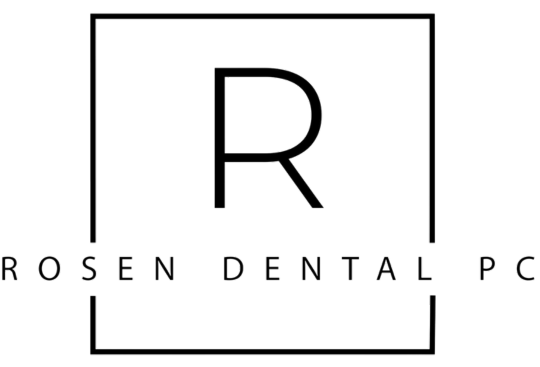Have you ever wondered about the role of dental crowns and bridges in modern dentistry? These restorative treatments are crucial for repairing and enhancing dental functionality and aesthetics. By supporting damaged teeth or replacing missing ones, dental crowns and bridges help maintain oral health and improve overall dental structure.
Overview of Dental Crowns and Bridges
Dental crowns and bridges are fundamental components in modern dentistry, offering solutions for restoring and enhancing dental health and aesthetics. Dental crowns, specifically, are custom-made caps placed over a tooth to cover the tooth to restore its shape, size, and strength, and improve its appearance. These crowns are used for various purposes, such as protecting a weak tooth from breaking, holding together parts of a cracked tooth, and covering a dental implant. Made from various materials including ceramics, porcelain, resin, or stainless steel, dental crowns can be matched to the color of your natural teeth to provide a seamless look.
In the context of dental crowns and bridges, choosing the right dental office is crucial for ensuring high-quality care and optimal outcomes. Discovering Your Local Dental Office: A Community Guide can help you find a reputable provider skilled in the latest techniques and materials in dental crown and bridge work. This guide is an invaluable resource for anyone looking to enhance their smile and ensure their dental health is in the best hands.
Functions of Dental Bridges
Dental bridges are a fundamental component in modern dentistry used primarily to replace missing teeth. By bridging the gap where teeth are absent, these devices help maintain the natural shape of the face and alleviate stress on oral structures. Dental bridges are typically anchored onto neighboring teeth after preparing them for dental crowns. This setup allows for a functional bite and can significantly improve the ability to chew and speak, restoring not only the function but also the aesthetics of one’s smile.
The integration of dental crowns and bridges into dental restoration work plays a crucial role in enhancing oral health. When teeth are lost, the remaining teeth can shift position, leading to potential bite problems or even jaw pain. Dental bridges help prevent this movement by evenly distributing the forces in a bite, thereby maintaining the alignment and health of the jaw and surrounding teeth. For more detailed information on how these procedures are conducted, consider visiting Somers Dental Crowns and Bridges Services.
Materials Used in Crowns and Bridges
In modern dentistry, the materials used for dental crowns and bridges are crucial for ensuring their durability and functionality. These materials must effectively mimic the natural appearance and strength of teeth. Commonly, dentists use porcelain, ceramic, metal alloys, and composite resin to craft these dental solutions. Each material offers distinct advantages in terms of aesthetic appeal and resilience, catering to the diverse needs and preferences of patients. The choice of material impacts the overall success of dental crowns and bridges in restoring both the appearance and functionality of a patient’s smile.
Longevity and Durability Considerations
When considering dental crowns and bridges, longevity and durability are essential factors. These dental solutions are designed to mimic the function and appearance of natural teeth, and their effectiveness over time is a testament to modern dentistry’s advancements. The materials used in dental crowns and bridges are selected for their strength and resistance to wear, ensuring they can handle the daily demands of chewing and speaking. With proper care, these dental restorations can provide lasting support and maintain oral health. For those seeking dental services, Rosen Dental PC at Somers Dentist is known for its commitment to quality dental care.
Impact on Oral Health
Dental crowns and bridges play a crucial role in modern dentistry, significantly influencing overall oral health. These dental solutions help restore the functionality and aesthetics of teeth that are damaged or lost. By maintaining the structural integrity of the mouth, dental crowns and bridges ensure that patients can continue to enjoy a wide range of foods and maintain proper speech. Moreover, they help distribute bite forces evenly, preventing further oral health issues such as jaw pain or misalignment of surrounding teeth. Their role in supporting oral health is fundamental in comprehensive dental care.
Aesthetic Benefits of Crowns and Bridges
Dental crowns and bridges not only restore functionality but also significantly enhance the aesthetic appeal of your smile. These dental solutions help in correcting imperfections such as broken, misshapen, or discolored teeth. By covering damaged or unsightly teeth, dental crowns and bridges can be crafted to match the color, size, and shape of your natural teeth, ensuring a seamless and attractive appearance. This aspect of modern dentistry is crucial as it boosts confidence and contributes to a positive self-image, making dental crowns and bridges a popular choice for those looking to improve both their oral health and cosmetic appeal.
Common Reasons for Using Crowns
Dental crowns and bridges are pivotal in modern dentistry for restoring and enhancing dental health. Commonly, dental crowns are utilized to protect and strengthen teeth that have been weakened by decay, cracks, or excessive wear. They serve as a cap for the damaged tooth, providing structural support and preventing further deterioration. Additionally, crowns are used to anchor dental bridges securely, which replace missing teeth and help maintain the alignment of the surrounding teeth. This dual functionality makes dental crowns and bridges essential for both restorative and cosmetic dental procedures, ensuring patients regain both the function and appearance of their natural teeth.
Role in Restorative Dentistry
Dental crowns and bridges play a pivotal role in restorative dentistry, significantly impacting oral health by restoring both the function and aesthetics of damaged or missing teeth. These dental solutions not only help in improving chewing and speaking abilities but also prevent remaining teeth from drifting out of position, which can lead to further oral health issues. By maintaining proper alignment and reducing strain on the dental structure, dental crowns and bridges ensure long-term health benefits and enhance overall dental wellness.
Evolution of Crown and Bridge Techniques
The field of dentistry has seen significant advancements in the techniques used for dental crowns and bridges, enhancing both the functionality and aesthetic outcomes for patients. Historically, these restorations were primarily made from metals or porcelain fused to metal, offering durability but limited aesthetic appeal. Today, the evolution in materials such as ceramic and composite resins allows for devices that are not only strong but also closely mimic the natural appearance of teeth. Additionally, modern technology such as CAD/CAM (Computer-Aided Design and Computer-Aided Manufacturing) and 3D printing has revolutionized the precision with which these restorations are crafted, ensuring a more accurate fit and better overall patient satisfaction. This progress in dental crowns and bridges ensures that patients enjoy not only restored function but also an enhanced quality of life.
Conclusion
Understanding the role of dental crowns and bridges is crucial in modern dentistry. For further inquiries, feel free to call us at 914-277-8400 or read our reviews on Google Maps.

